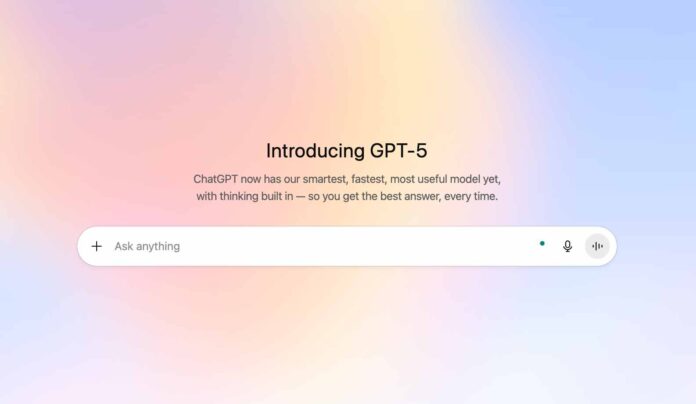- GPT-5’s rocky debut was caused by a malfunction in its real-time routing system
- Users say GPT-4o performed better, and Altman may bring it back for Plus subscribers
- Plus users will see doubled rate limits during the rollout
- Viral “chart crime” from the launch event sparks online jokes and criticism
OpenAI’s much-anticipated GPT-5 made its public debut this week, but the rollout didn’t go quite as planned.
In a Reddit AMA on Friday, CEO Sam Altman and members of the GPT-5 team addressed a flood of complaints from users who said the new model wasn’t performing as well as GPT-4o, its immediate predecessor.
The main culprit, Altman explained, was a glitch in GPT-5’s new “real-time router” feature. This router is designed to automatically choose between faster responses or deeper, slower reasoning based on the prompt. On launch day, however, the router malfunctioned for hours, leaving many users with less capable answers.
“GPT-5 will seem smarter starting today,” Altman told users. “Yesterday, we had a sev and the autoswitcher was out of commission for a chunk of the day, and the result was GPT-5 seemed way dumber.”
The Case for Bringing GPT-4o Back
Beyond the technical hiccup, many users simply said they preferred GPT-4o’s output. Some asked Altman to restore access to it, particularly for paying Plus subscribers. Altman didn’t rule out the idea.
“We are looking into letting Plus users continue to use 4o,” he said, adding that OpenAI is gathering more data to weigh the tradeoffs. For now, the company is fine-tuning GPT-5’s routing decisions to ensure users get the right model more often and plans to make the system more transparent by clearly showing which model is answering.
Perks for Plus Users
Altman also announced a gesture aimed at easing the transition for GPT-5 adopters: doubled rate limits for Plus subscribers. “We are going to double rate limits for Plus users as we finish rollout,” he said.
The change is meant to give subscribers more breathing room to experiment with the new model, test its strengths and weaknesses, and adapt it to their workflows without worrying about hitting monthly usage caps too soon.
The Viral ‘Chart Crime’
While the routing glitch frustrated some users, the most widely discussed moment of GPT-5’s launch came from an entirely different problem: a badly misleading bar chart.
During Thursday’s live presentation, OpenAI displayed a benchmark comparison where a lower score appeared as a much taller bar, an obvious visual inaccuracy that social media quickly dubbed a “chart crime.” The image spread fast, prompting jokes about whether GPT itself had created the slide.
Altman didn’t bring up the incident during the AMA, but the day before, he called it a “mega chart screwup” on X. The charts on OpenAI’s official blog were correct, but the flawed onstage graphic had already cemented itself as a launch-day meme.
GPT-5’s Performance and Next Steps
Despite the criticism, some early testers have praised GPT-5’s capabilities. Developer and reviewer Simon Willison, who had early access, said he generally liked its performance.
Still, he noted that the model sometimes struggles with seemingly straightforward requests, such as converting data into a table, and called that “a good example of a GPT-5 failure.”
Altman closed the AMA with a pledge to stabilize the system and keep responding to community feedback. “We will continue to work to get things stable and will keep listening to feedback,” he said.
For now, GPT-5’s rollout continues as OpenAI addresses the technical flaws, weighs whether to restore GPT-4o for subscribers, and works to repair a slightly bruised public debut.
Follow TechBSB For More Updates

